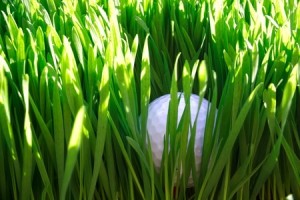It has probably been a while since the lawn mower made an appearance in the garden, although the organised among you will have had the blades sharpened already in preparation for the next round of mowing.
Thank you for reading this post, don't forget to subscribe!

If you have not sharpened your lawn mower blades by now, get it done before the lawn gets out of control. Mowing with blunt blades invites disease into your grass and leaves a jagged edge that will soon turn brown; don’t be tempted to give it a quick pass with the lawn mower and leave the blades until later as you may be creating more problems than you solve.
Before mowing for the first time, the lawn surface needs to be prepared and assessed for any patches that may need attention. If you have been taking care of leaf fall then your lawn should be in a reasonable condition and the main things to remove are dead grass and moss that may have become woven into the lawn. If you have a big garden it is worth using a scarifier to do this, but a spring tined rake will do just as well on a small patch. Make sure you go gently to avoid ripping up the grass, but get out as much debris as possible. As you clear the thatch you will also uncover all the items that have been hiding since last summer. Plastic cutlery from the last garden party, stray golf balls from putting practice and bits of garden toys will damage your lawnmower and could fly out from underneath it causing serious injury, so you will want to ensure there are no such dangers lurking in your lawn.
Now you can see what faces you a bit better and you can start to remove weeds like buttercups, daisies and dandelions. Clovers and trefoils may look ugly on a showy lawn, but they do feed the soil with nitrogen, acting as a natural fertiliser, so leaving them alone will benefit the health of your garden. You will also see where there are bald patches that may need reseeding, so now is a good time to seed and fertilise your lawn. If you do reseed patches, avoid these with the lawn mower for a couple of weeks in order to let the seed germinate and grow. Any remaining grass in the bald patches acts as a shelter for the new seed and can be cut back at a later date. If you think some areas need entirely new turf then get this in before mowing, but take extra care to water the new turf as it is at risk of drying out while it bonds with the ground beneath.

You are almost ready for the first mow of the season, but one last job is to trim the edges and borders so your first mow will be neat right up to the edge. If you have areas that are hard to mow consider strimming these back before mowing. The first mow should take off dead tips with a newly sharpened blade, so go as low as you can get away with to cut back dead grass. Don’t mow aggressively short though, as this can stop the grass from growing. Remove the clippings from the first mow in order to let the sunlight warm up the soil and get to the newly growing grass.
For the rest of the season, mulch the clippings back in as they help feed the lawn, and ensure you switch your mowing directions around to stop the grass becoming flattened, as it will grow in the direction it lies. Most importantly, enjoy your lawn well into late summer safe in the knowledge that the hard work has been done.
